In today’s fast-paced manufacturing world, the ability to efficiently produce high-quality grills is crucial for companies looking to stay competitive. One key factor that often determines the success of these operations is the mold-making process. By bringing mold making in-house, companies can achieve a level of control and customization that wasn’t previously possible. This article delves into the benefits of in-house mold making for grill manufacturing, from streamlined production to reduced lead times and sustainability considerations.
The Advantages of In-House Mold Making for Grill Manufacturing
In-house mold making for grill manufacturing brings a plethora of advantages that can significantly elevate the quality, efficiency, and customization of the products. By maintaining mold production in-house, companies gain a level of control and precision that is hard to achieve through external suppliers. Let’s delve into some of the key benefits:
Mold-making in-house allows for quicker turnaround times, as there’s no need to wait for external mold manufacturers to produce and deliver the molds. This rapid response can be critical in meeting tight production schedules, especially during peak seasons or when last-minute design changes are required.
With in-house mold making, companies have direct oversight of the mold-making process. This ensures that every detail is meticulously attended to, from the initial design to the final production of the mold. The result is a high level of quality control that can be challenging to maintain when relying on external suppliers.
Customization is another major advantage of in-house mold making. Companies can easily modify designs to cater to specific customer needs or market trends. This flexibility allows for the creation of unique grill designs that stand out in the competitive market, enhancing brand differentiation.
Maintaining in-house mold making capabilities can lead to substantial cost savings. By avoiding the markup that comes with using external mold makers, companies can reduce the overall production costs. Additionally, in-house production can minimize the risk of errors and defects, which can lead to costly rework or product recalls.
The close proximity between mold design and manufacturing also fosters better communication and collaboration. Designers and engineers can work closely with the mold-making team, ensuring that the design intent is accurately translated into the mold. This synergy can lead to innovations and improvements that might not be possible with a less integrated process.
In terms of sustainability, in-house mold making can be more environmentally friendly. Companies can select materials and production methods that align with their sustainability goals, without the constraints that might come with working with external suppliers. This can include using recycled materials or reducing energy consumption in the mold-making process.
The expertise that accumulates within an in-house mold-making team is invaluable. Over time, these teams develop a deep understanding of the intricacies involved in creating molds for grill manufacturing. This expertise can lead to more efficient designs, better mold performance, and a longer lifespan for the molds themselves.
Another advantage is the ability to quickly respond to market demands. If a new feature or component needs to be added to a grill, the in-house team can quickly design and produce the necessary mold, reducing the time to market for the new product.
In the realm of innovation, in-house mold making opens up new possibilities. Companies can experiment with different materials, designs, and production techniques to create cutting-edge grill products. This can lead to a competitive edge and new opportunities for growth.
From a strategic standpoint, having in-house mold-making capabilities can reduce dependence on external suppliers. This can be particularly beneficial in terms of supply chain management, as it lessens the risk of delays or disruptions that might occur with external suppliers.
Finally, in-house mold making can enhance the overall customer experience. By ensuring consistent quality and customization, companies can deliver products that exceed customer expectations, fostering brand loyalty and repeat business.
In conclusion, the advantages of in-house mold making for grill manufacturing are clear. From faster turnaround times and improved quality control to enhanced customization and cost savings, the benefits are numerous. By leveraging the expertise and resources of an in-house mold-making team, companies can not only improve their product offerings but also strengthen their competitive position in the market.
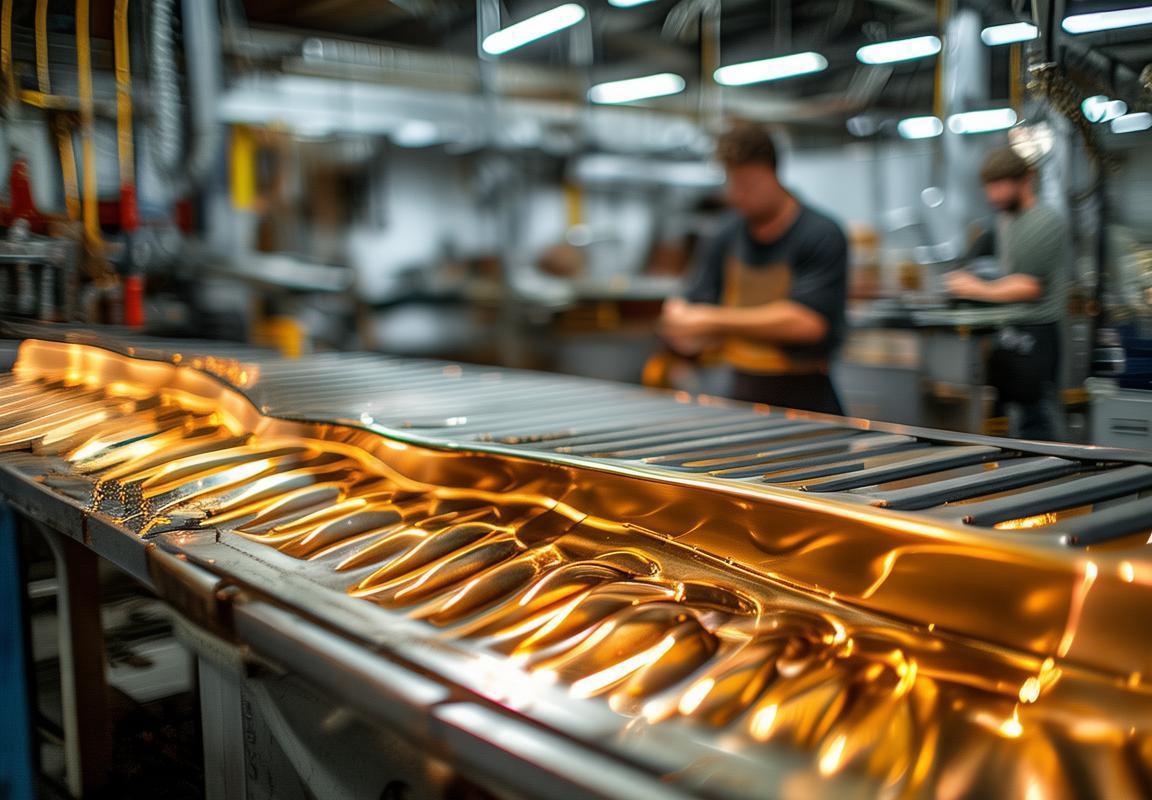
Streamlining the Grill Production Process
In-house mold making for grill manufacturing significantly streamlines the production process, offering a multitude of benefits that can lead to enhanced efficiency and quality. By having the mold-making capabilities within the same facility, manufacturers can eliminate the complexities and delays often associated with outsourcing this critical component.
-
Reduced Dependency on External Suppliers – With in-house mold making, manufacturers no longer need to rely on external suppliers for their mold needs. This reduces the time spent on procurement, negotiation, and quality assurance checks, as everything is managed internally.
-
Faster Turnaround Times – The elimination of external suppliers means that molds can be created, modified, or replaced much more quickly. This agility allows for faster prototyping and production cycles, which is particularly beneficial for meeting tight deadlines or responding to market demands.
-
Enhanced Communication – Having mold making in-house fosters better communication between different departments. Designers, engineers, and production teams can collaborate more closely, leading to quicker feedback loops and more precise mold specifications.
-
Customization Flexibility – In-house mold making enables manufacturers to create custom molds that perfectly fit their specific grill designs. This flexibility ensures that the final product aligns with the brand’s identity and customer expectations without the need for extensive modifications or additional parts.
-
Cost Savings – While the initial investment in mold-making equipment can be significant, the long-term cost savings are substantial. By reducing the number of suppliers and the need for external mold repairs or replacements, manufacturers can cut down on overhead costs.
-
Improved Quality Control – With in-house mold making, quality control is more manageable. Manufacturers can closely monitor the mold-making process, ensuring that every mold meets the highest standards before it’s used in production. This leads to fewer defects in the final product.
-
Enhanced Production Consistency – Consistent mold quality directly translates to consistent grill production. In-house mold making allows for the production of molds that are uniform in design and performance, resulting in a high-quality product every time.
-
Quick Adjustments and Upgrades – The ability to modify molds in-house means that manufacturers can quickly adapt to changes in design or technology. This agility is crucial in an industry where innovation is key to staying competitive.
-
Reduced Waste – With better control over the mold-making process, manufacturers can minimize waste. By optimizing mold designs and using materials more efficiently, the environmental impact is reduced, contributing to a more sustainable production process.
-
Increased Product Development Speed – In-house mold making supports a faster product development cycle. This speed allows manufacturers to bring new grill models to market more quickly, capturing market share and satisfying consumer demand.
-
Enhanced Innovation – The proximity of mold making to the rest of the production process encourages innovation. Engineers can experiment with new designs and materials, leading to the creation of unique grill features that set a brand apart.
-
Long-Term Strategic Planning – In-house mold making allows for better long-term strategic planning. Manufacturers can plan for future production needs without the uncertainty of supplier reliability, leading to more stable and predictable operations.
-
Increased Competitiveness – Streamlining the production process through in-house mold making can give manufacturers a competitive edge. Faster production times, better quality control, and the ability to customize products can all contribute to a stronger market position.
-
Customer Satisfaction – Ultimately, the streamlined grill production process leads to higher customer satisfaction. With faster delivery times, consistent quality, and innovative features, customers are more likely to be repeat buyers and brand advocates.
By integrating in-house mold making into the grill manufacturing process, companies can achieve a more efficient, responsive, and high-quality production environment. This strategic move not only enhances the bottom line but also solidifies the company’s position in the competitive grill market.
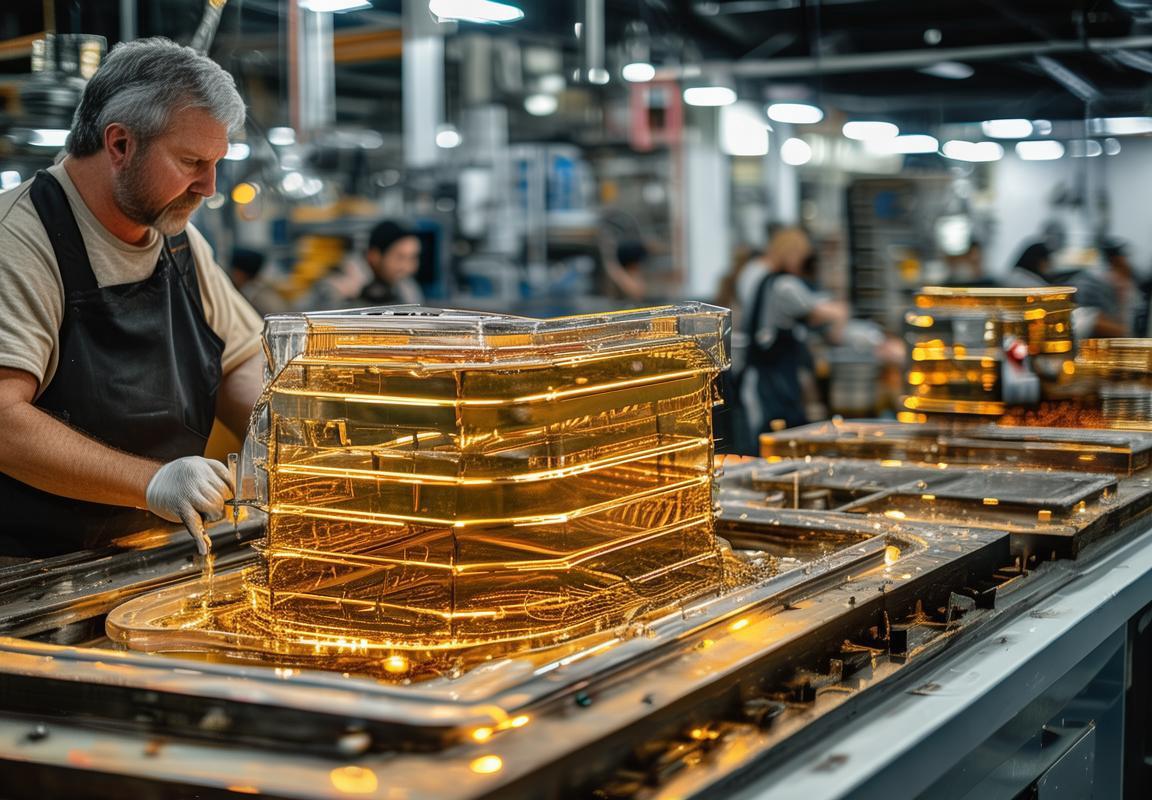
Customization at Your Fingertips
In the world of grill manufacturing, the ability to customize products to meet the unique needs of customers is a game-changer. With in-house mold making, this level of personalization becomes not just achievable, but seamless. Here’s how it works and why it’s a game-changer for grill producers.
Grills come in all shapes and sizes, and the market demands a wide variety of designs to cater to different tastes and preferences. When mold making is done in-house, it opens up a world of possibilities for manufacturers to create custom molds that can produce grills with intricate designs, specific dimensions, or even unique features that set them apart from the competition.
The flexibility of in-house mold making allows for quick adjustments and iterations. If a customer requests a slight alteration to the design, the mold can be modified on the spot, ensuring that the production process doesn’t face unnecessary delays. This agility is crucial in today’s fast-paced market, where customer satisfaction is paramount.
Moreover, the customization extends beyond just the grill’s appearance. With tailored molds, manufacturers can incorporate functional enhancements that cater to specific use cases. For instance, a mold can be designed to create a grill with a wider cooking surface or integrated features like adjustable heat zones, making the product more versatile and appealing to a broader audience.
One of the most significant advantages of in-house mold making is the ability to produce prototypes rapidly. This means that before a full-scale production run, manufacturers can test and tweak the design to ensure it meets quality standards and customer expectations. The iterative process of prototyping helps in fine-tuning the product, reducing the risk of market failure and saving both time and resources.
Customization also plays a pivotal role in branding. Companies can use their in-house mold making capabilities to create grills that reflect their brand identity, from the material used to the finish and even the overall aesthetic. This level of brand consistency is difficult to achieve when outsourcing mold making, as it often involves compromising on design specifications.
The direct control over the mold-making process means that manufacturers can keep a close eye on the quality of materials and the craftsmanship involved in the production. This oversight is crucial when it comes to custom designs, as even minor defects can be more noticeable on a personalized product.
Furthermore, customization allows for the creation of limited edition or seasonal grills. Imagine a company releasing a special mold for a holiday-themed grill or a collaboration with a celebrity chef. These unique offerings can generate buzz and increase the perceived value of the product, driving sales and customer loyalty.
In the B2B market, customization can be a powerful tool for winning contracts. Companies looking for specialized equipment can be reassured that their specific requirements will be met when they see a manufacturer’s ability to produce custom grills. This can be a significant differentiator in a competitive bidding process.
Another aspect of customization is the potential for sustainability. By creating molds that produce grills with less waste, manufacturers can contribute to a greener production process. This is especially important as consumers become more environmentally conscious and seek out products that align with their values.
Lastly, the ability to offer customization can lead to increased customer engagement. When customers feel like they are part of the design process, they are more likely to be invested in the final product. This can result in higher satisfaction rates and repeat business.
In summary, in-house mold making for grill manufacturing offers unparalleled customization capabilities that can drive innovation, improve customer satisfaction, and provide a competitive edge in the market. The ability to tailor products to specific needs, create prototypes swiftly, and maintain brand consistency are just a few of the benefits that make this approach a must-have for any grill producer looking to thrive in the modern marketplace.
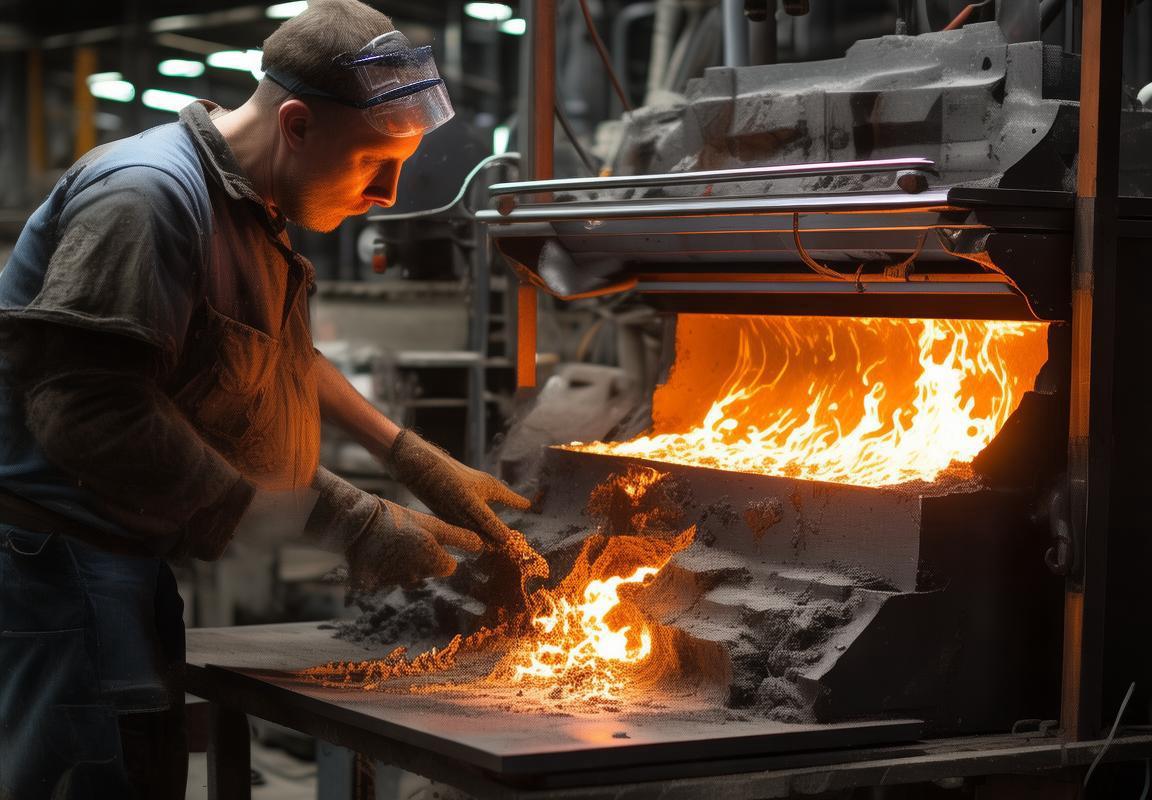
Quality Control and Consistency
In the realm of grill manufacturing, achieving not just a high-quality product but also a consistent one is paramount. The process of in-house mold making plays a crucial role in ensuring that each grill that rolls off the assembly line meets these standards. Here’s how quality control and consistency are fostered through this practice:
The precision of in-house mold making allows for the creation of molds that are tailored to the exact specifications of the grill design. This level of detail ensures that every component produced is an exact replica of the original design, reducing the likelihood of errors and variations in the final product.
Regular maintenance and calibration of in-house molds are essential to uphold quality. By having dedicated technicians who are intimately familiar with these molds, manufacturers can quickly identify and correct any discrepancies in the molding process. This proactive approach to maintenance minimizes the risk of producing defective parts.
Consistency in materials is another cornerstone of quality control. When the mold-making process is in-house, the manufacturer has full control over the materials used to create the molds. This control extends to the raw materials that are used to produce the grills themselves, ensuring that every part is made from high-grade, reliable materials.
The use of advanced CAD (Computer-Aided Design) and CAM (Computer-Aided Manufacturing) software in in-house mold making also contributes to quality control. These tools enable designers to simulate the molding process, identify potential issues before they arise, and optimize the mold design for better performance and reduced waste.
During the manufacturing process, each grill is subject to rigorous inspections at various stages. With in-house mold making, these inspections can be more thorough, as the molds are designed to produce parts that are easier to inspect. This includes checking for uniform thickness, correct dimensions, and the absence of any imperfections such as burrs or voids.
The consistency of the manufacturing process itself is crucial. In-house mold making allows for the implementation of standardized procedures, from the initial design phase to the final quality checks. This standardization reduces the variability in the manufacturing process, leading to a more consistent end product.
Quality control isn’t just about catching defects; it’s also about preventing them. By having a team of skilled technicians who understand the intricacies of the mold-making process, manufacturers can identify and address potential issues early on. This proactive stance helps to prevent defects from occurring in the first place.
The consistency of the grills is not just a matter of appearance; it also extends to the functionality of the product. Grills that are produced with consistent molds will function the same way, providing a consistent user experience. This reliability is something that consumers appreciate and expect from high-quality grill manufacturers.
Another aspect of quality control is the traceability of parts. When a grill is produced with in-house molds, every part can be traced back to its source. This is particularly important in the event of a recall, where manufacturers can quickly identify which products need to be returned and why.
In-house mold making also facilitates continuous improvement. By analyzing the performance of the molds and the resulting grill components, manufacturers can identify areas for improvement. This could involve tweaking the mold design, adjusting the manufacturing process, or even changing the raw materials to enhance the quality and longevity of the grill.
Lastly, the consistency of the grill design itself is maintained through in-house mold making. As the molds are created with the original design in mind, the integrity of the grill’s shape, structure, and aesthetics are preserved. This is particularly important for brands that have established a reputation for producing high-end, aesthetically pleasing grills.
In conclusion, the integration of in-house mold making into the grill manufacturing process is a game-changer for quality control and consistency. From the precision of the molds to the rigorous inspections, every step is designed to ensure that the final product meets the highest standards of quality and reliability. This commitment to excellence is what sets premium grill manufacturers apart in a competitive market.
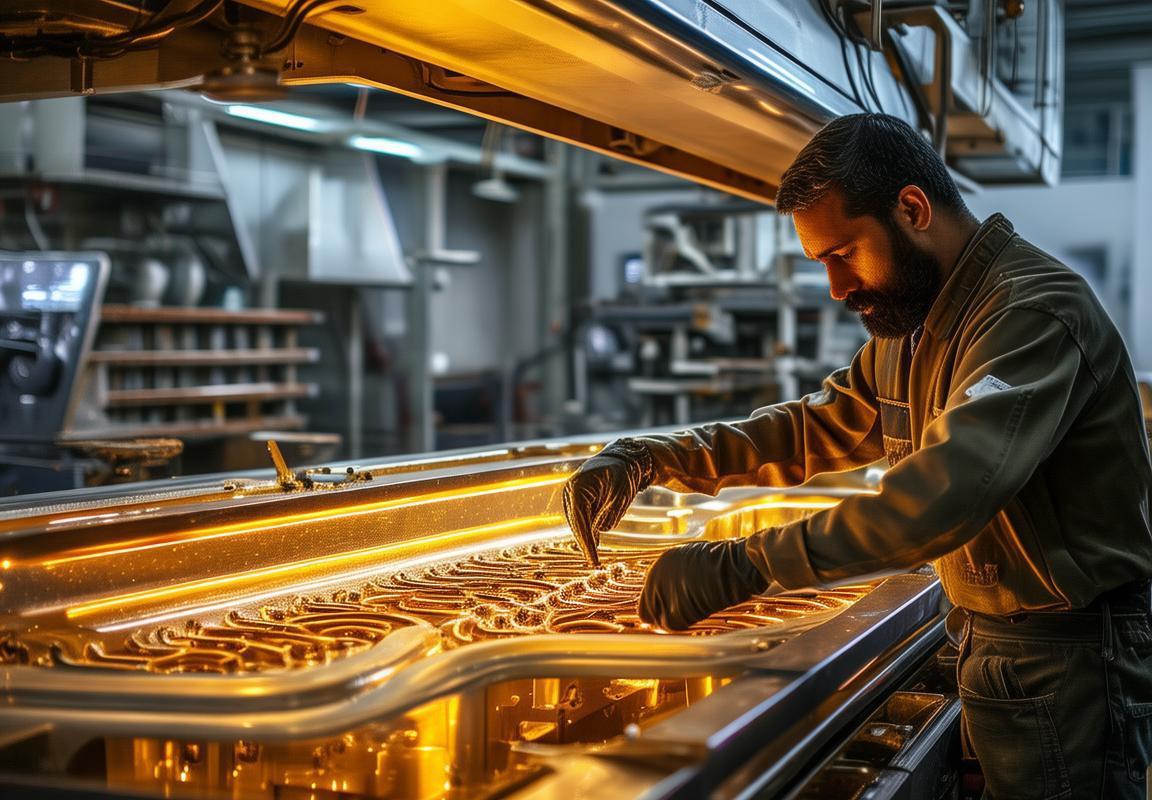
Cost-Effective Manufacturing
In the realm of grill manufacturing, achieving cost-effective production is a game-changer. By optimizing the manufacturing process, companies can deliver high-quality grills without breaking the bank. Here’s how it’s done:
Precision Engineering Saves MoneyOne of the key factors in cost-effective manufacturing is the use of precision engineering. By investing in advanced CAD (Computer-Aided Design) software and 3D printing technology, manufacturers can create molds that are not only precise but also efficient. This level of accuracy reduces the need for rework and waste, leading to significant cost savings.
Efficient Mold DesignThe design of the mold plays a crucial role in the manufacturing process. An efficiently designed mold allows for quick and easy production of grill components, reducing the time it takes to produce each part. This efficiency translates into lower labor costs and shorter production cycles.
Reduced Material UsageThrough careful mold design, manufacturers can also minimize the amount of material used. By optimizing the mold to fit the product perfectly, there’s less material left over after the mold is removed. This not only reduces waste but also slashes the cost of raw materials.
Continuous ImprovementCost-effective manufacturing is not a one-time fix; it’s an ongoing process. Companies that embrace continuous improvement initiatives are constantly seeking ways to optimize their operations. This might involve regular training for staff, adopting new technologies, or reevaluating existing processes to find more efficient methods.
Batch Production and Economies of ScaleBatch production can be a powerful tool for cost reduction. By producing items in large quantities, manufacturers can take advantage of economies of scale. This means that the cost per unit decreases as production volume increases, making it more affordable to produce high-quality grills in bulk.
Supply Chain OptimizationA well-managed supply chain is essential for cost-effective manufacturing. By maintaining strong relationships with suppliers and negotiating favorable terms, manufacturers can secure raw materials at a lower cost. Additionally, strategic inventory management ensures that materials are available when needed, reducing storage costs and the risk of spoilage.
Automated Production LinesAutomating parts of the manufacturing process can lead to substantial cost savings. Automated systems can work around the clock, reducing labor costs and increasing production rates. While the initial investment in automation can be significant, the long-term benefits often outweigh the costs.
Quality Assurance Without CompromiseMaintaining high quality standards is crucial in cost-effective manufacturing. By implementing rigorous quality control measures, manufacturers can ensure that every grill meets or exceeds customer expectations. This not only reduces the cost of returns and warranty claims but also enhances the brand’s reputation.
Flexibility in Design and ProductionBeing able to adapt designs and production methods quickly can lead to cost savings. For example, if a design change is required, an in-house mold-making capability allows for quick adjustments without the need to wait for external suppliers. This agility can save both time and money.
Training and DevelopmentInvesting in the training and development of employees can pay off in the long run. A well-trained workforce is more efficient and productive, leading to lower labor costs and higher quality output.
Environmental ConsiderationsCost-effective manufacturing also takes into account environmental impact. By using sustainable materials and energy-efficient processes, manufacturers can reduce their carbon footprint and potentially save on energy costs.
ConclusionCost-effective manufacturing is a multifaceted approach that requires a combination of advanced technology, strategic planning, and continuous improvement. By focusing on these aspects, grill manufacturers can produce high-quality products that are both affordable and sustainable.
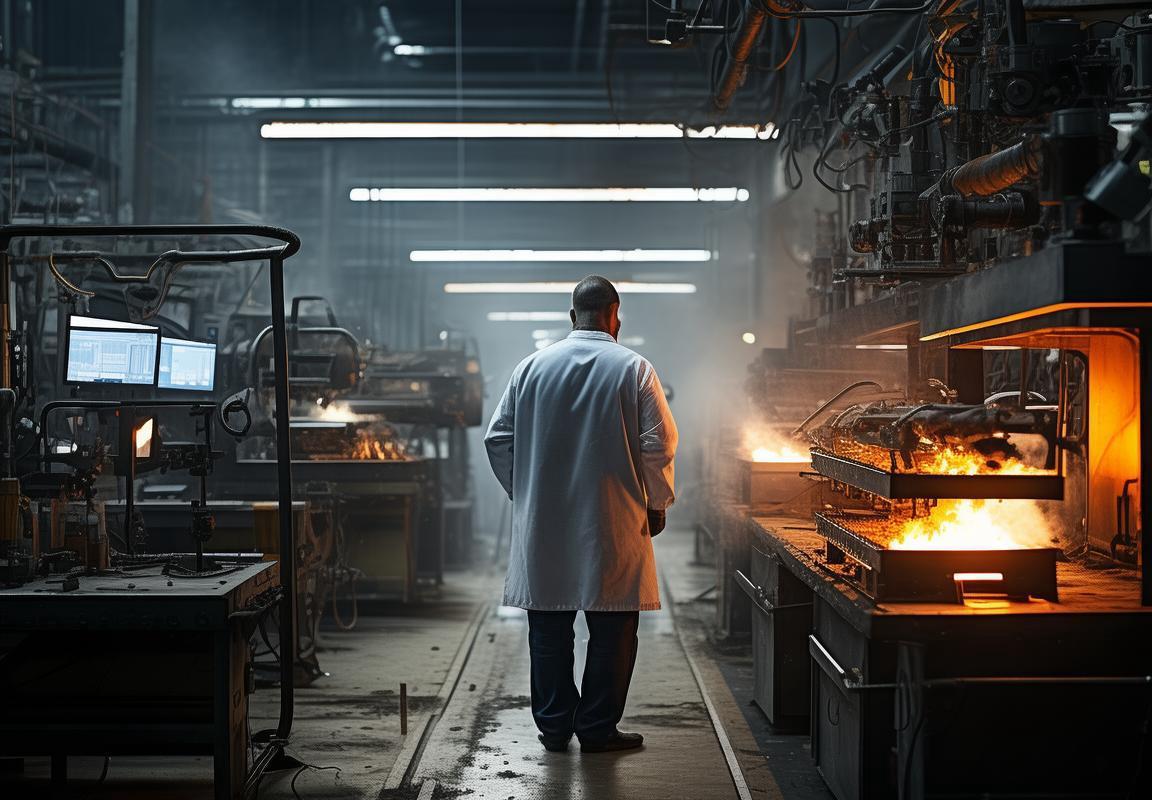
Reduced Lead Times
In the fast-paced world of manufacturing, reducing lead times is a game-changer. It’s not just about meeting deadlines; it’s about staying ahead of the competition and ensuring customer satisfaction. Here’s how in-house mold making can significantly cut down on lead times:
The integration of mold making within the manufacturing process allows for a seamless flow of production. By eliminating the need to outsource mold fabrication, companies can bypass the delays often associated with external suppliers. This means that the mold, which is the foundation for high-quality grill components, is developed and ready much faster.
Streamlined communication is another key factor. When mold making is in-house, the dialogue between engineers, designers, and production teams is immediate and direct. This agility ensures that any adjustments or modifications can be made swiftly, without the lag time that comes with coordinating with external parties.
The efficiency of in-house mold making also extends to the quality of the molds themselves. Molds created internally are often more precise and tailored to the specific needs of the grill components. This precision reduces the number of defects and the need for rework, which in turn cuts down on lead times.
Customization is another area where in-house mold making shines. The ability to design and produce molds that are optimized for specific grill designs means that production can begin almost immediately after the design phase is complete. This eliminates the wait time for molds to be made and delivered, which can be days or even weeks when relying on external suppliers.
In the realm of inventory management, in-house mold making offers significant advantages. By producing molds on-site, companies can maintain a stock of essential molds, ready to be used as needed. This reduces the time spent waiting for a mold to be produced and shipped, ensuring that production can continue without interruption.
The speed of prototyping is also accelerated with in-house mold making. Companies can quickly create prototypes to test new grill designs or to iterate on existing ones. This rapid prototyping not only shortens lead times but also allows for more informed decision-making, as changes can be made early in the development process.
Another aspect often overlooked is the impact of lead times on customer satisfaction. A shorter lead time means that customers can receive their grills more quickly, which is particularly important in a market where time is of the essence. This can give companies a competitive edge by being able to offer faster delivery times.
The cost savings associated with reduced lead times are substantial. By cutting down on the time it takes to produce a grill, companies can reduce their carrying costs for raw materials and work-in-progress inventory. This efficiency also means that companies can respond more quickly to changes in demand, avoiding the risk of overstocking or stockouts.
In the realm of logistics, reduced lead times can lead to significant savings. The fewer transportation and warehousing costs associated with longer lead times, the more a company can invest in other areas of their business. This includes research and development, marketing, or even employee training.
In-house mold making also allows for a more responsive production schedule. Companies can adjust their production runs based on real-time demand, rather than being locked into longer production cycles that are dictated by external mold suppliers. This flexibility is crucial in a market that is constantly evolving.
Lastly, the reduction in lead times can have a positive impact on the company’s reputation. A brand known for its quick turnaround times can build a loyal customer base that values efficiency and reliability. This can lead to increased word-of-mouth referrals and a stronger market position.
In conclusion, the reduction in lead times through in-house mold making is a multifaceted benefit. It not only speeds up the production process but also enhances customer satisfaction, reduces costs, and improves the company’s overall agility in the market. By focusing on these advantages, companies can ensure that they remain competitive and profitable in the dynamic world of grill manufacturing.

Case Study: Success Stories with In-House Mold Making
In the realm of grill manufacturing, the adoption of in-house mold making has paved the way for remarkable success stories. Here are a few case studies that showcase how this approach has transformed the industry:
Our first case study involves a mid-sized grill manufacturer that was struggling with the inconsistency of outsourced mold production. With in-house mold making, they were able to address this issue head-on. By keeping the design and production of molds under one roof, the company achieved a level of precision and control that was previously unattainable. This led to a significant reduction in defects and a marked improvement in the quality of their grill components.
Another success story comes from a well-known outdoor cooking equipment brand. They had been relying on multiple suppliers for their molds, which resulted in delays and quality inconsistencies. By bringing mold making in-house, they not only cut down on the time it took to receive new molds but also ensured that every component met their exact specifications. This allowed them to streamline their production line and meet customer demands more efficiently.
A third example is a family-owned grill manufacturer that wanted to expand its product line but was held back by the limitations of its mold production capabilities. By investing in in-house mold making, they were able to rapidly prototype new designs and bring new products to market at a fraction of the time it would have taken through traditional channels. This agility gave them a competitive edge and helped them capture a larger share of the market.
In each of these success stories, the in-house mold making process has played a pivotal role in driving innovation and growth. Let’s delve deeper into the specific benefits that have made this shift so impactful:
1. Enhanced Innovation and Product DevelopmentWith in-house mold making, companies can experiment with new designs and materials more freely. This has led to the creation of unique features that set their products apart from the competition. For instance, a company may develop a grill with a more durable and heat-resistant surface, or one that offers improved cooking efficiency. The ability to quickly iterate and refine these designs without the constraints of external suppliers has been a game-changer for many.
2. Improved Communication and CollaborationWhen all aspects of mold making are in-house, communication becomes more direct and collaborative. Engineers, designers, and production teams can work closely together, ensuring that every detail is accounted for and that the final product meets both aesthetic and functional standards. This seamless collaboration often results in a more cohesive and effective product design.
3. Faster Turnaround TimesThe lead time for custom molds can be lengthy when outsourcing, often taking weeks or even months. By having an in-house mold making team, companies can drastically reduce these times, sometimes cutting them down to just days. This rapid turnaround allows for quicker product launches and the ability to respond swiftly to market demands or customer feedback.
4. Cost SavingsWhile the initial investment in in-house mold making can be significant, the long-term cost savings are substantial. By eliminating the need for multiple suppliers and reducing the risk of defects, companies can cut down on waste and rework. Additionally, the ability to produce molds in-house means fewer middlemen, which can lower costs associated with shipping and handling.
5. Enhanced Quality ControlIn-house mold making provides a level of quality control that is often difficult to achieve when outsourcing. By having full control over the mold-making process, companies can ensure that every mold is produced to their exact specifications. This attention to detail results in a higher quality end product, which can lead to increased customer satisfaction and brand loyalty.
6. Increased FlexibilityThe flexibility offered by in-house mold making is invaluable. Companies can modify existing molds to accommodate changes in design or production requirements without having to wait for suppliers. This agility allows them to adapt to market trends and customer preferences with ease.
In conclusion, the success stories with in-house mold making for grill manufacturers demonstrate the power of internalizing this critical aspect of production. By enhancing innovation, improving communication, reducing lead times, and achieving cost savings, these companies have not only improved their own operations but have also set new standards in the industry. As the demand for customized and high-quality grill products continues to rise, the trend towards in-house mold making is likely to become even more prevalent.
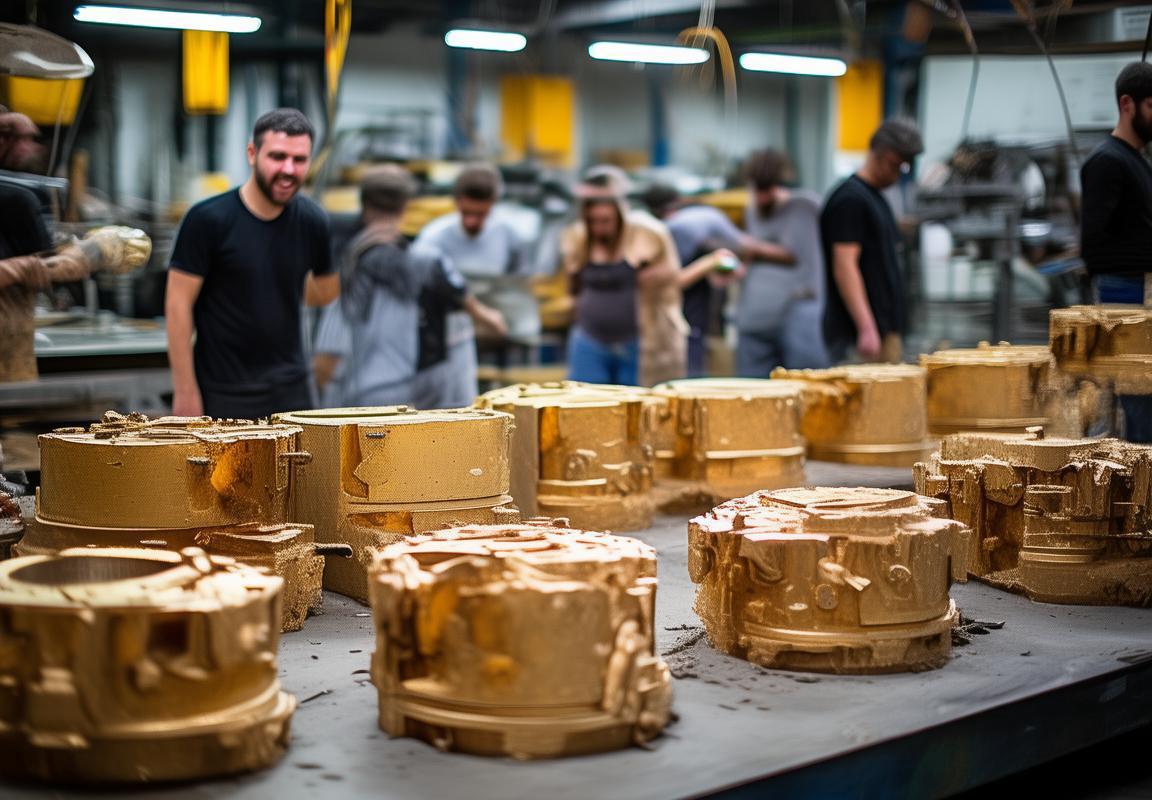
The Role of Expertise in In-House Mold Making
In-house mold making demands a specialized skill set that can significantly impact the quality and efficiency of a product’s manufacturing process. The expertise of the team responsible for in-house mold making is a cornerstone of success, particularly in industries like grill manufacturing. Here’s how their expertise shapes the process:
The precision of the mold is crucial in ensuring that the final product meets the exact specifications. Mold makers with years of experience understand the nuances of material properties and the intricacies of design that can affect the mold’s performance. Their deep knowledge allows them to create molds that are not only accurate but also durable, reducing the need for frequent repairs or replacements.
In the world of grill manufacturing, every millimeter counts. Expert mold makers are adept at translating complex design requirements into practical mold designs. They know how to optimize the mold’s structure for efficient material flow and cooling, which can lead to faster cycle times and improved part quality. This level of detail can’t be overlooked, as it directly influences the aesthetics and functionality of the grill.
The design of a mold is just the beginning. The mold maker’s expertise extends to the mold-making process itself, including the selection of materials, tooling techniques, and the implementation of advanced manufacturing technologies. For instance, the use of high-speed steel or carbide for mold inserts can greatly enhance the mold’s longevity and the consistency of the grill parts produced.
In-house mold making allows for a level of control over the manufacturing process that is hard to replicate with external suppliers. Mold makers who work in-house can quickly iterate on designs, making adjustments to improve the mold’s performance without the delays that might come from outsourcing. This agility is especially valuable in a competitive market where the ability to respond quickly to customer feedback or market trends can be the difference between success and failure.
The expertise of in-house mold makers also plays a pivotal role in the training and mentorship of new employees. As these professionals pass on their knowledge, the entire team benefits from a cumulative understanding of mold-making best practices. This shared expertise fosters a culture of continuous improvement, where each member of the team contributes to the refinement of the mold-making process.
In terms of cost, the role of expertise in in-house mold making cannot be overstated. While it may seem counterintuitive, investing in highly skilled mold makers can actually lead to significant cost savings over time. These experts are less likely to make mistakes that could lead to costly mold failures or rework. Their ability to create molds that perform consistently and efficiently means that the production line runs smoother, reducing downtime and increasing output.
When it comes to the actual mold-making process, expertise is key in the handling of complex geometries. Grills often feature intricate designs with tight tolerances, and in-house mold makers are well-versed in techniques that can handle these challenges. They understand the importance of maintaining proper mold balance and ensuring that the mold is free from defects that could lead to poor part quality or even mold damage.
The role of expertise in in-house mold making also involves staying abreast of technological advancements. Innovations in materials, such as the use of composite materials or advanced polymers, can greatly enhance the performance of molds. Expert mold makers are the ones who can integrate these new materials into their designs, providing a competitive edge to the company they work for.
Moreover, the expertise of in-house mold makers is invaluable when it comes to troubleshooting. No matter how well-designed a mold is, there are always unforeseen issues that can arise during production. Mold makers with extensive experience can quickly diagnose problems and implement solutions, minimizing the impact on production schedules.
In conclusion, the role of expertise in in-house mold making is multifaceted. It ranges from the creation of precise molds that meet the exacting standards of grill manufacturing to the ongoing training and development of the mold-making team. This expertise is not just a tool in the manufacturing process; it is the backbone of a company’s ability to produce high-quality products efficiently and cost-effectively.
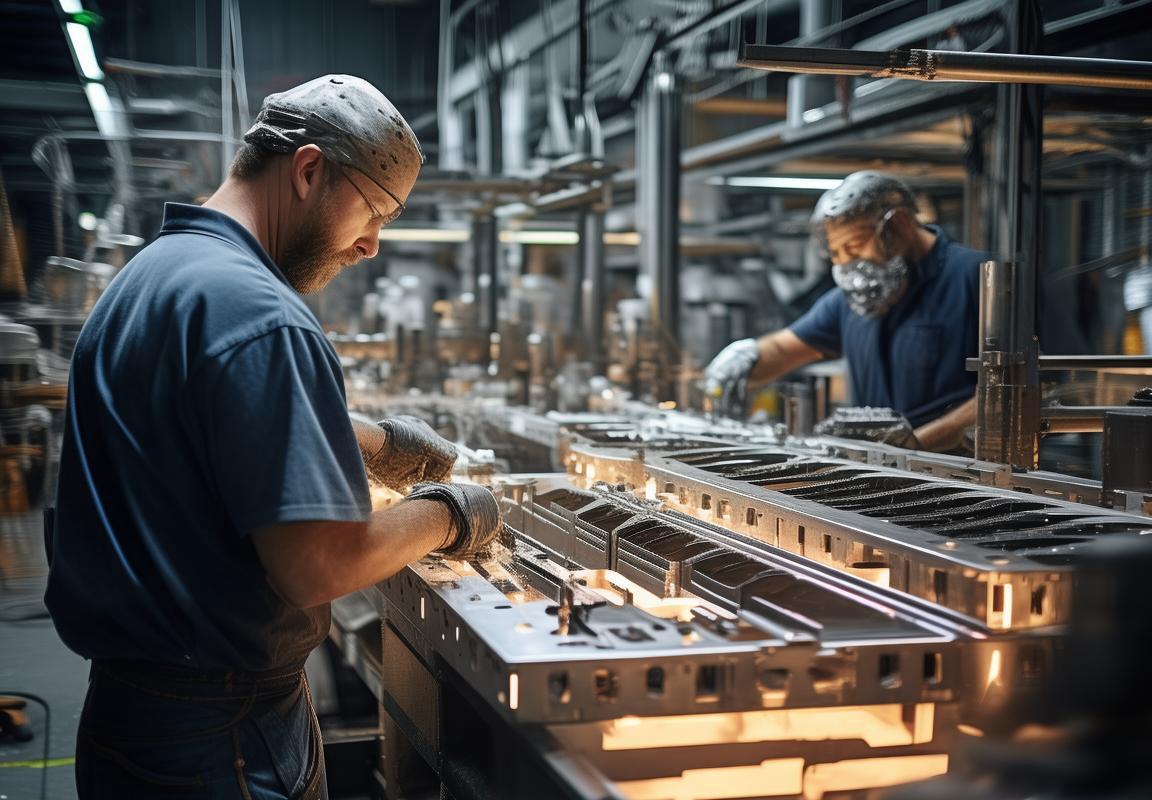
Sustainability and Efficiency
In the realm of in-house mold making, the fusion of sustainability and efficiency is a cornerstone of modern manufacturing practices. This synergy not only reduces the environmental footprint but also enhances the overall productivity of the manufacturing process. Let’s delve into how these two aspects intersect and contribute to the success of in-house mold making operations.
The integration of sustainable practices begins with the choice of materials. Advanced mold makers are increasingly opting for eco-friendly materials that are recyclable and have a lower carbon footprint. These materials, such as biodegradable plastics and recycled metals, are not only kind to the environment but also offer robust performance, ensuring that the molds are both durable and sustainable.
Efficiency is paramount in the mold-making process, and sustainability plays a significant role in achieving this goal. By using materials that require less energy to process and are easier to recycle, manufacturers can reduce waste and energy consumption. This reduction in waste also minimizes the need for additional processing, cutting down on the time and resources required for mold production.
The design phase of in-house mold making is where sustainability and efficiency are most visibly intertwined. Molds are engineered to be highly efficient in their function, allowing for faster production cycles and reduced material usage. This design precision also means that the molds can be made with less material, which, in turn, decreases the energy needed for molding and assembly.
Moreover, the use of advanced CAD (Computer-Aided Design) and CAM (Computer-Aided Manufacturing) software has revolutionized the mold-making process. These tools enable designers to create complex molds with intricate details that were once impossible to achieve. The precision of these designs not only ensures a high-quality end product but also reduces the number of molds needed, thus cutting down on material costs and waste.
In terms of energy consumption, in-house mold making facilities are adopting more energy-efficient machinery and processes. For instance, the use of waterjet cutting technology, which is less energy-intensive than traditional cutting methods, has become increasingly popular. This not only reduces the carbon footprint but also improves the efficiency of the mold-making process.
The maintenance of these molds is also a critical aspect where sustainability and efficiency meet. Regular maintenance not only prolongs the life of the molds but also ensures that they continue to operate at peak efficiency. By keeping the molds in optimal condition, manufacturers can reduce downtime and the frequency of mold replacement, which in turn conserves resources.
Another area where sustainability and efficiency are harmoniously linked is in the training of mold-making staff. Employees are trained not only in the technical aspects of mold making but also in the importance of sustainable practices. This includes understanding how to use materials and machinery efficiently to minimize waste and energy use.
In the realm of post-production, sustainability is evident in the recycling and reuse of materials. Companies are finding innovative ways to recycle the materials used in mold making, such as reusing metal shavings and plastic chips. This not only reduces the need for new materials but also saves on disposal costs.
The financial benefits of sustainability and efficiency in in-house mold making are substantial. By reducing waste and energy consumption, companies can lower their operational costs. This cost savings can be reinvested into research and development, allowing for the creation of even more efficient and sustainable molds.
In conclusion, the role of sustainability and efficiency in in-house mold making cannot be overstated. From the selection of materials to the design and maintenance of molds, every step of the process is an opportunity to balance environmental responsibility with operational excellence. As the industry continues to evolve, the pursuit of sustainable and efficient mold-making practices will be key to staying competitive and meeting the demands of a more environmentally conscious market.

Conclusion: The Future of Grill Mold Making in-House
The in-house mold making process has revolutionized the grill manufacturing industry, offering a multitude of benefits that extend beyond the confines of traditional production methods. From reducing lead times to fostering a culture of sustainability and efficiency, the future of grill mold making in-house is shaping up to be a cornerstone of the industry’s evolution. Let’s delve into the nuances of this transformative approach.
In-house mold making allows for a seamless integration of design, engineering, and production, leading to a more cohesive and efficient workflow. By eliminating the need to outsource mold creation, companies can respond swiftly to design changes and customer feedback, ensuring that their products are always at the forefront of innovation.
The agility offered by in-house mold making is unmatched. With the ability to iterate and refine molds without external dependencies, manufacturers can expedite the prototyping phase. This agility is crucial in a fast-paced market where the competitive edge often hinges on the speed of innovation.
A significant advantage of in-house mold making is the enhanced quality control it brings. When the process is kept in-house, manufacturers can closely monitor the mold-making process from start to finish. This vigilance minimizes the risk of defects and ensures that every grill that rolls off the assembly line meets the highest standards of quality.
Moreover, the cost savings associated with in-house mold making are substantial. By eliminating the expenses related to outsourcing, such as shipping, logistics, and third-party fees, companies can allocate resources more effectively. This cost efficiency translates into competitive pricing for consumers, fostering brand loyalty and market share growth.
In-house mold making also contributes to a more sustainable manufacturing process. By reducing the carbon footprint associated with transporting molds and components, companies can reduce their environmental impact. This commitment to sustainability not only benefits the planet but also enhances the company’s reputation among eco-conscious consumers.
The expertise of the in-house mold-making team cannot be overstated. These professionals are the backbone of the manufacturing process, with a deep understanding of materials, design principles, and production techniques. Their knowledge allows for the creation of molds that are not only functional but also optimized for efficiency and longevity.
Collaboration between the design team and the mold-making experts is key. This cross-functional approach ensures that every grill design is not only visually appealing but also practical and durable. The seamless integration of design and engineering expertise results in products that exceed customer expectations.
In the realm of efficiency, in-house mold making shines. By controlling the entire mold-making process, manufacturers can reduce downtime and optimize production schedules. This efficiency translates into higher output without compromising quality, leading to increased profitability.
The future of grill mold making in-house is bright, driven by advancements in technology and the ever-growing demand for high-quality, customizable products. As the industry continues to evolve, the in-house mold-making process will become even more sophisticated, capable of producing intricate designs with unparalleled precision.
Investing in advanced equipment and training for the mold-making team is a strategic move. This not only enhances the capabilities of the team but also positions the company as a leader in the industry. The ability to produce complex molds with ease will set the stage for innovative grill designs that push the boundaries of what’s possible.
In conclusion, the future of grill mold making in-house is characterized by a blend of agility, quality, sustainability, and efficiency. As manufacturers continue to leverage the benefits of in-house mold making, the industry can expect to see a surge in innovative grill designs that cater to the diverse needs and preferences of consumers worldwide. The in-house mold-making process is not just a trend; it’s a testament to the industry’s commitment to excellence and a glimpse into the future of grill manufacturing.